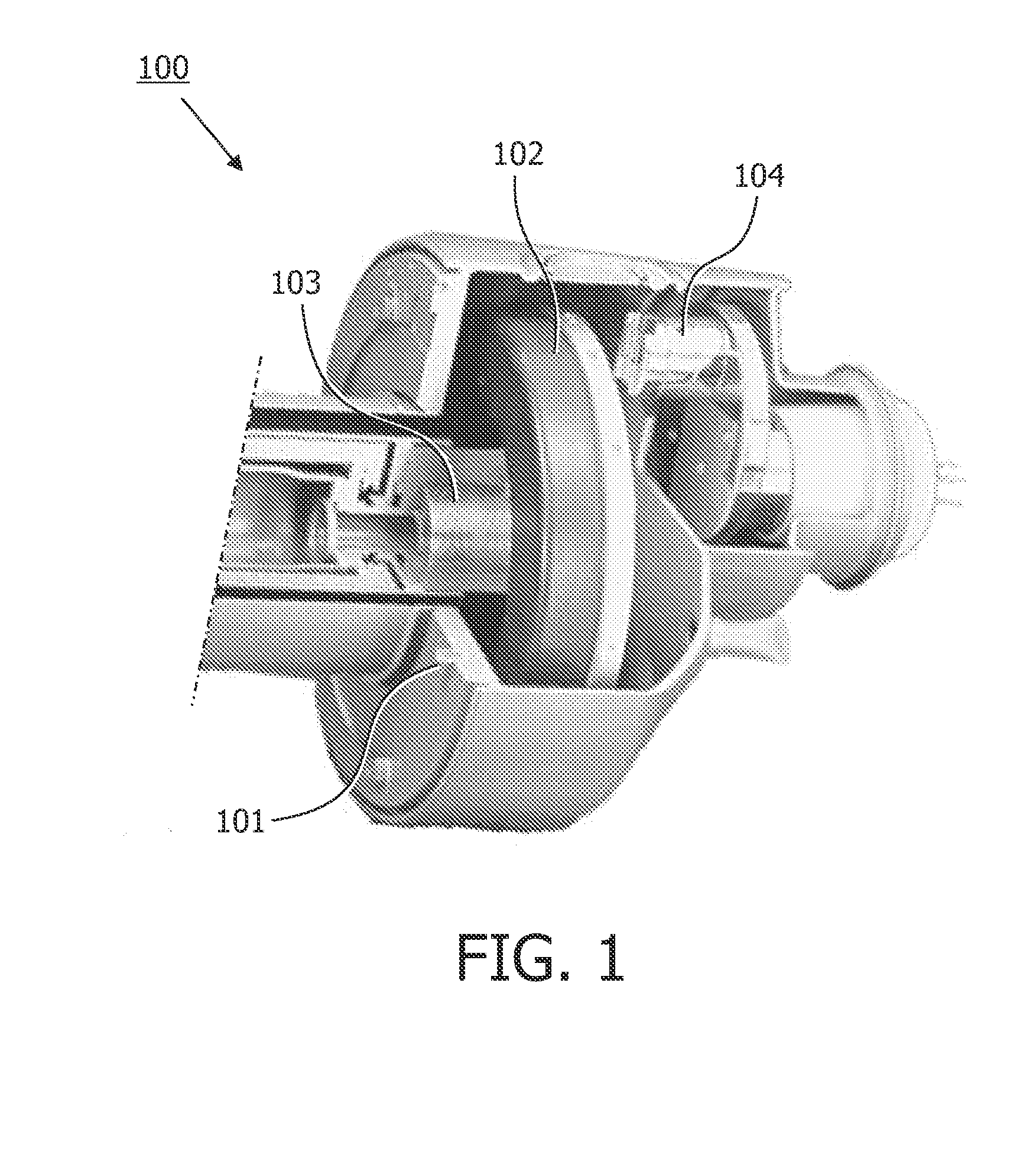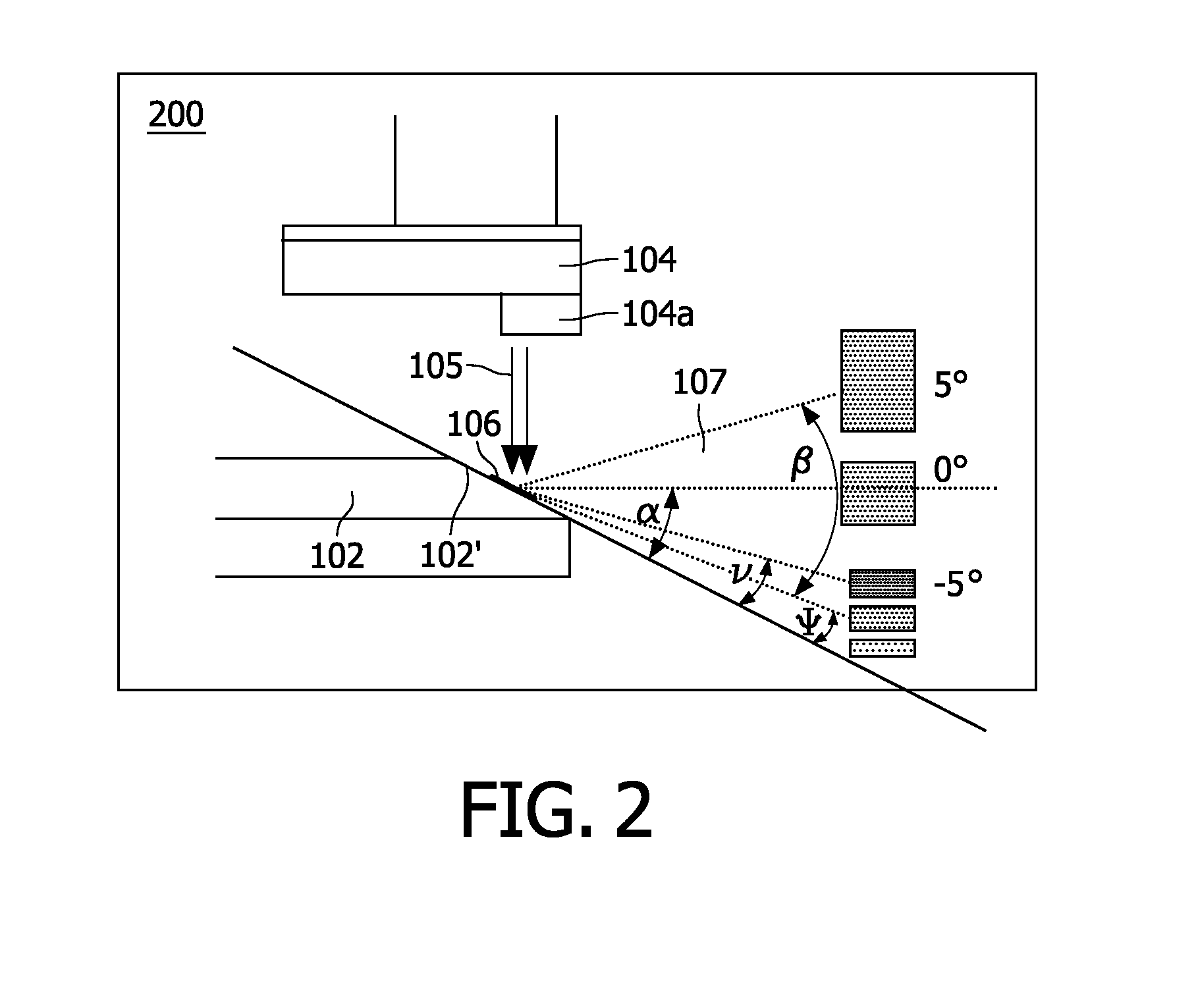Multi-segment anode target for an x-ray tube of the rotary anode type with each anode disk segment having its own anode inclination angle with respect to a plane normal to the rotational axis of the rotary anode and x-ray tube comprising a rotary anode with such a multi-segment anode target
a technology of x-ray tubes and anodes, which is applied in the direction of x-ray tube target geometry, electric discharge tubes, electrical apparatus, etc., can solve the problems of high energy density at the focal spot, the power limiting factor of high-power x-ray sources, and the melting temperature of anodes
- Summary
- Abstract
- Description
- Claims
- Application Information
AI Technical Summary
Benefits of technology
Problems solved by technology
Method used
Image
Examples
Embodiment Construction
[0028]In the following, an X-ray tube's rotary anode target according to an exemplary embodiment of the present invention will be explained in more detail with respect to special refinements and referring to the accompanying drawings.
[0029]The focal spot of an X-ray tube's anode emits X-radiation into a half sphere around the anode. As can be taken from FIG. 1, which shows a three-dimensional view of a conventional X-ray tube of the rotary anode type as known from the prior art with a rotationally supported anode fixedly attached to a rotary shaft 103, an X-ray beam which is emitted by the anode target of the rotary anode 102 when being exposed to an electron beam emitted by a cathode 104 may be limited by anode shadow, the radiation port of the X-ray tube, the radiation port of the tube housing 101 and by the blades of an additional aperture.
[0030]The impact of the anode inclination angle on the radiation field of an emitted X-ray beam can be derived from FIG. 2. As shown in this f...
PUM
 Login to View More
Login to View More Abstract
Description
Claims
Application Information
 Login to View More
Login to View More - R&D
- Intellectual Property
- Life Sciences
- Materials
- Tech Scout
- Unparalleled Data Quality
- Higher Quality Content
- 60% Fewer Hallucinations
Browse by: Latest US Patents, China's latest patents, Technical Efficacy Thesaurus, Application Domain, Technology Topic, Popular Technical Reports.
© 2025 PatSnap. All rights reserved.Legal|Privacy policy|Modern Slavery Act Transparency Statement|Sitemap|About US| Contact US: help@patsnap.com



